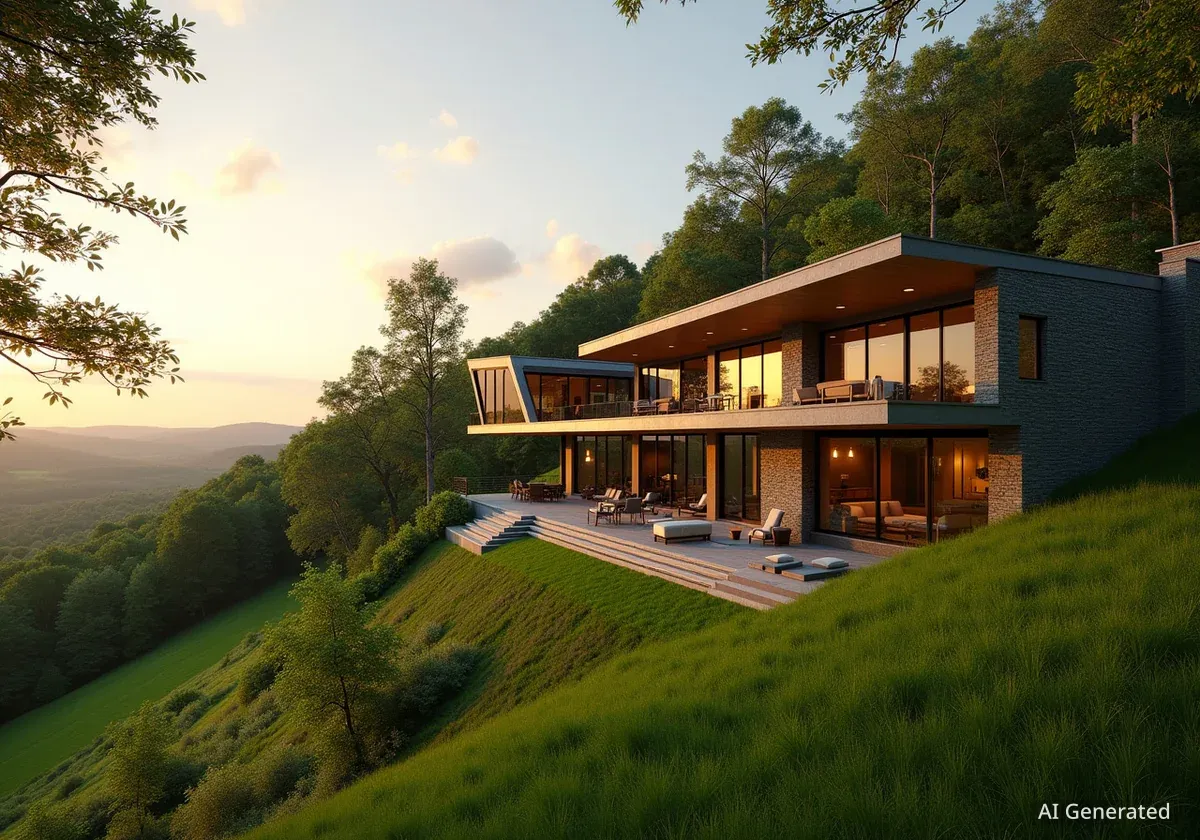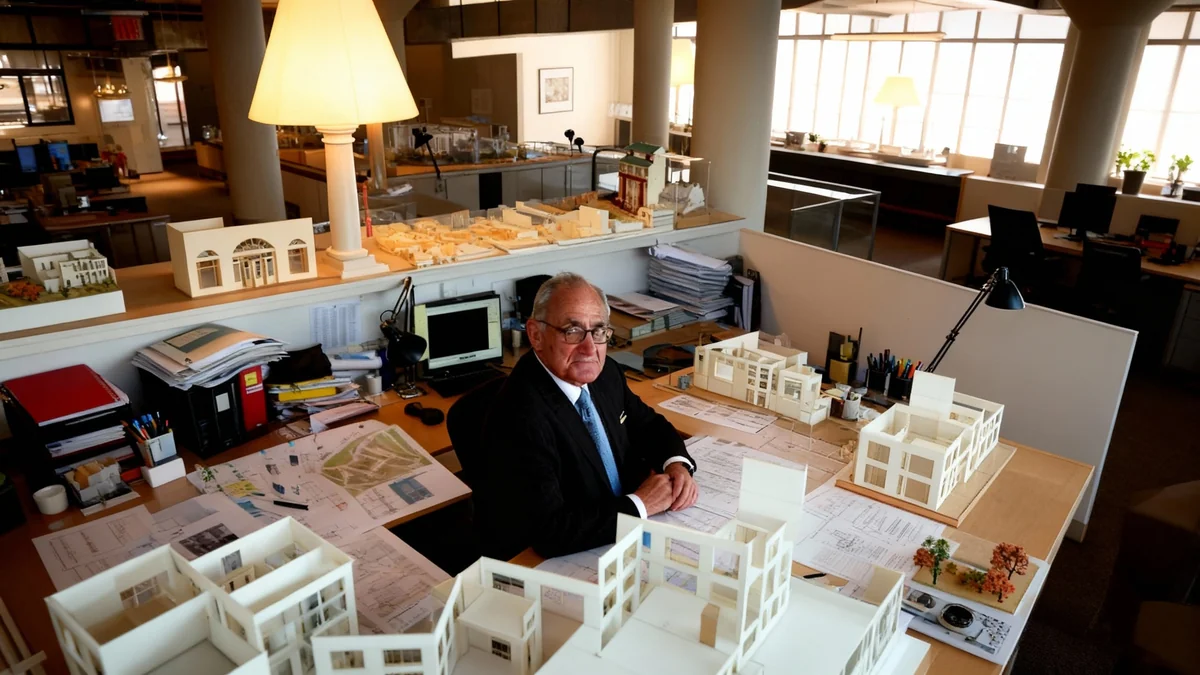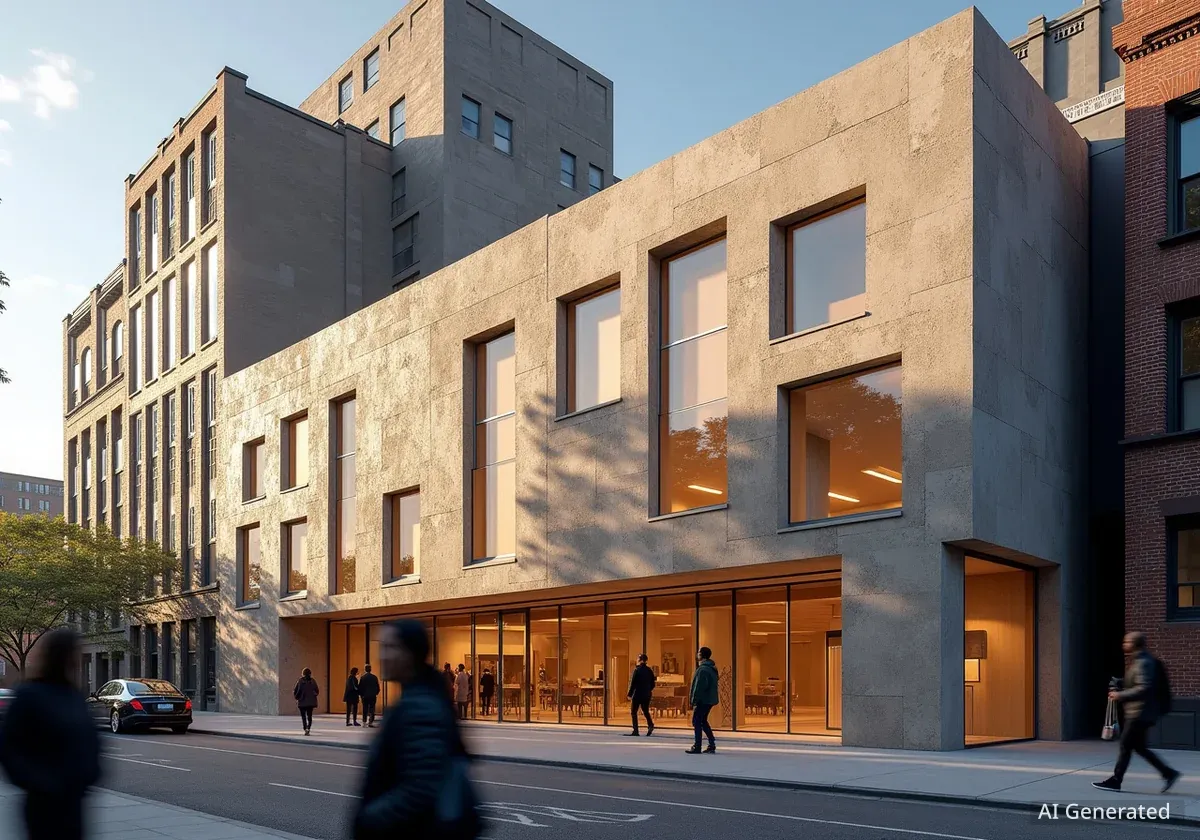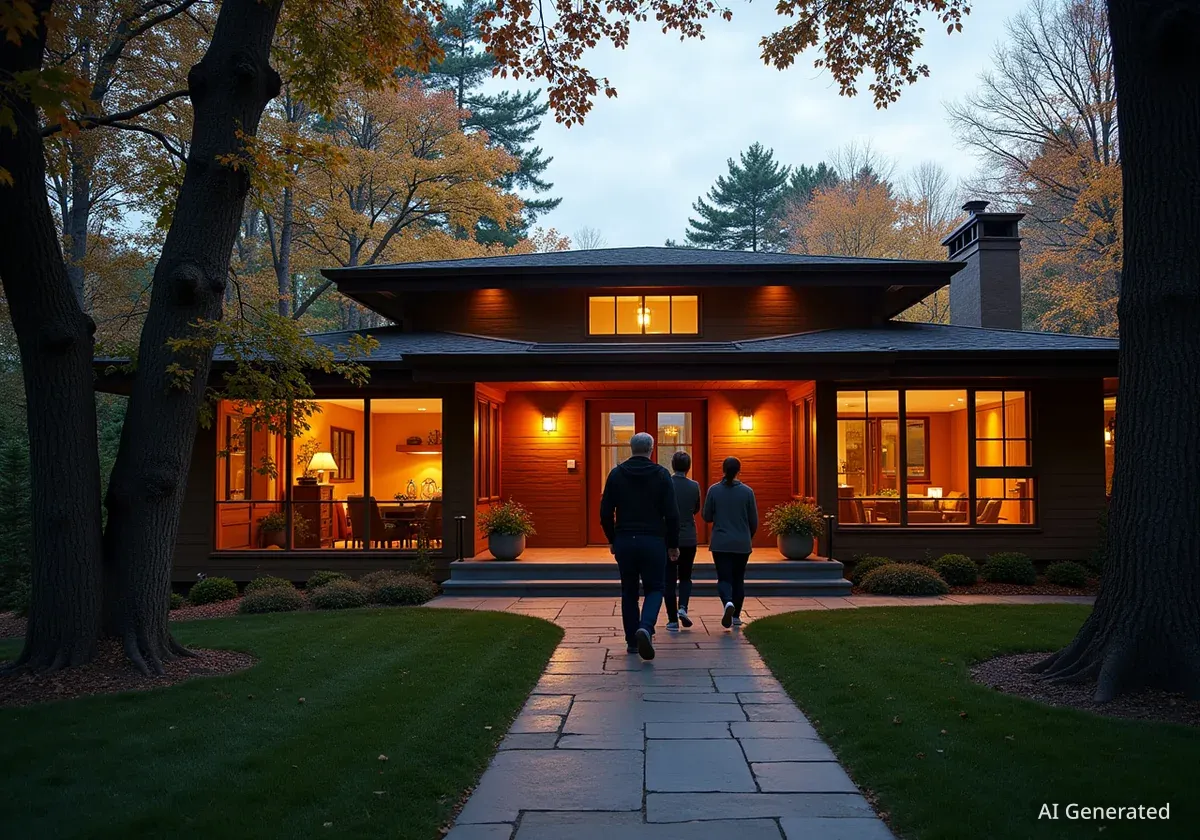In Lancaster County, Pennsylvania, a new $3 million residence named Treetops redefines modern living by integrating directly with its natural surroundings. The 4,900-square-foot home is built into the crest of a hill, offering expansive views of the surrounding 22-acre wooded lot and Pequea Creek below.
Designed and constructed by TONO Group, the home was completed in just under a year. It features four bedrooms and four-and-a-half bathrooms, with a primary design goal of making the homeowners feel completely immersed in nature while inside their living space.
Key Takeaways
- A $3 million, 4,900-square-foot custom home named Treetops has been built in Lancaster County.
- The residence is situated on a 22-acre lot, built into a hillside to maximize views of the surrounding woods.
- Key design features include floor-to-ceiling windows, folding glass walls, and seamless indoor-outdoor flooring.
- The home is equipped with a comprehensive smart home system that controls lighting, climate, security, and appliances.
- An unusual gabion fence, typically used in industrial settings, provides privacy and acts as a retaining wall.
Designing for Immersion in Nature
The core concept behind the Treetops project was to create a home that feels like a natural extension of the forest. The property, located near Willow Street, sits on a 22-acre lot where a commercial building was previously removed to make way for the residence.
According to Kyle Solyak, the project architect and operations director for TONO Group, the owner's primary request was to feel connected to the outdoors from the main living areas. "The owner wanted to look out his living space and basically feel a part of nature," Solyak explained. To achieve this, the team positioned the house directly on the edge of the hill.
Maximizing Light and Views
A critical element of the design is the extensive use of glass. The architects moved beyond standard window sizes, especially in private areas like bedrooms, to broaden the connection with the landscape. In the main gathering spaces, which feature an open-concept layout for the kitchen, living, and dining rooms, the windows are even more dramatic.
These windows stretch from floor to ceiling, reaching a height of one and a half stories. Solyak noted that this design choice helps the space feel as if it is "floating" rather than being firmly anchored to the ground. This architectural strategy maximizes both the views and the amount of natural daylight entering the home.
Strategic Sun Management
While maximizing sunlight was a goal, the design also had to account for potential glare and overheating. The architects carefully considered the angle of the sun throughout the day and year. Large roof overhangs were incorporated to provide shade during peak sun hours. Additionally, the home features automated shades that can be programmed or manually adjusted to control light levels.
"If there is a time of day that the sun is too much, the shades can automatically come down," Solyak said. "Or vice versa, if they want to open it up more, they have the ability to do that." This combination of passive design (overhangs) and active technology (automated shades) ensures comfort year-round.
Blurring the Lines Between Indoors and Outdoors
The Treetops home uses several innovative features to create a seamless transition between the interior and exterior environments. Beyond large windows, the design incorporates operable elements that physically open the home to the outside world.
A combination of standard operable windows and large bi-fold sliding doors allows for natural cross-ventilation, which helps cool the home without relying solely on air conditioning. One of the most significant features is a wall in the living and dining area that completely folds away, creating a massive opening to an outdoor patio with a fire pit and pool.
Seamless Flooring Transition
To enhance the feeling of a single, unified space, the design team paid close attention to the flooring. The same porcelain tile was used for both the interior living area and the exterior pool deck, creating an uninterrupted visual flow. "One of the key features we did was try to make sure that the flooring inside the house matched the flooring or the tile of the pool," Solyak stated. The outdoor version of the tile is thicker to withstand the elements, but its appearance is identical to the indoor tile.
This careful material selection reinforces the architectural goal of merging the home with its landscape, making the outdoor pool area feel like a natural extension of the living room.
A Fully Integrated Smart Home
Modern technology is woven into the fabric of the Treetops residence, offering convenience and control over nearly every aspect of the home's environment. While traditional wall switches are still present, the entire house can be managed through a single, unified application.
Travis Dantinne, the project manager from PROTO Construction (a part of TONO Group), highlighted the system's comprehensive nature. "From your thermostats to your refrigerators, everything goes through one app," he explained. This central control system manages:
- HVAC (heating, ventilation, and air conditioning)
- Lighting systems
- Home security cameras and alarms
- An integrated sound system
- Smart appliances
The automation allows for complex, programmed scenarios. For example, homeowners can create a "party lighting" scene with a single tap, play music throughout the entire house or in a single room, or turn off every light in the home simultaneously when leaving or going to bed. This functionality can also be accessed remotely, providing control from anywhere in the world.
Unconventional Construction and Materials
Despite its unique design and high-end features, the fundamental construction of Treetops is based on conventional methods. Solyak described it as "a wood frame home utilizing the majority of types of construction that would being done by any typical residential home builder."
"It’s just designed and configured in an atypical fashion. It’s got a unique roofline. It’s got unique massing to the structure. It’s got larger openings, things of that nature. It sort of pushes the envelope of conventional home building."
This approach allowed the team to create a visually striking home without requiring overly complex or experimental building techniques. According to Dantinne, the construction process was relatively straightforward with few major issues.
The Industrial Gabion Fence
One of the most distinctive features of the property is its fence. The homeowners requested a gabion fence, a structure typically seen in industrial or civil engineering projects like retaining walls along highways. Gabions are large, galvanized steel baskets filled with rocks.
The design and construction teams adapted this industrial concept for a residential setting. They created a fence composed of steel baskets filled with landscape stone, alternating with sections of a composite material that mimics the appearance of wood but offers greater durability and color retention.
The resulting fence serves multiple purposes. It provides privacy on the more level parts of the property and functions as a traditional retaining wall where the terrain slopes. The gabion wall stretches for approximately 200 feet before transitioning into a more conventional metal picket fence, which allows for unobstructed views into the surrounding woods.




